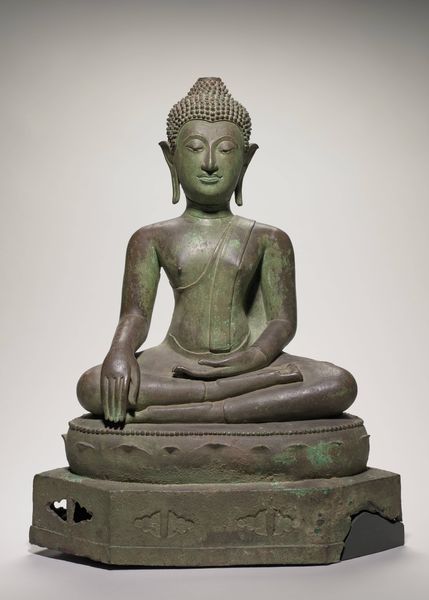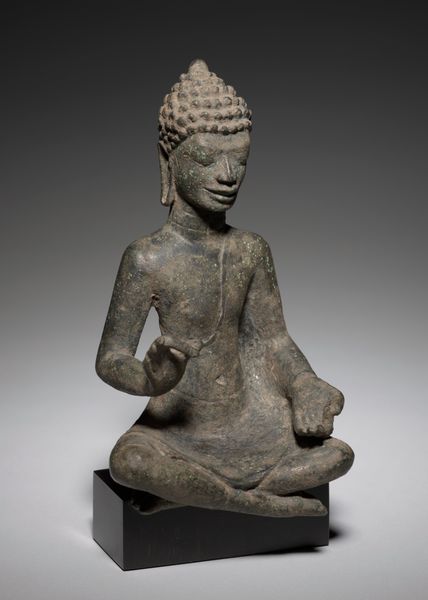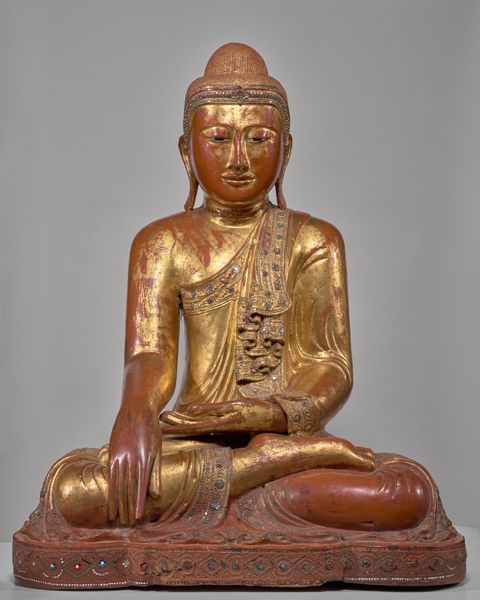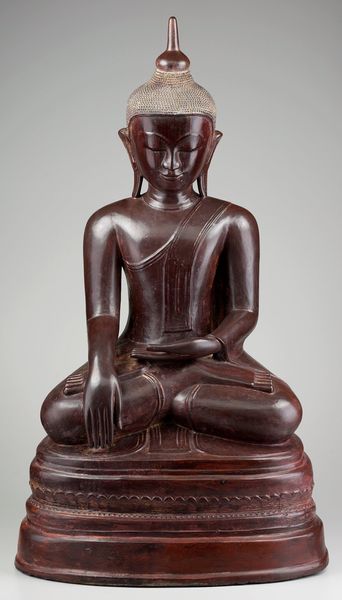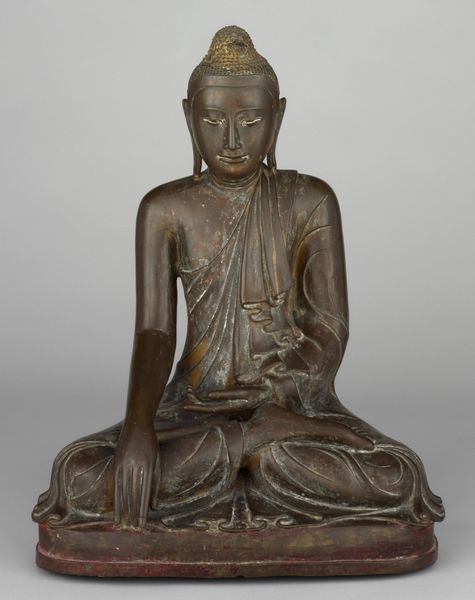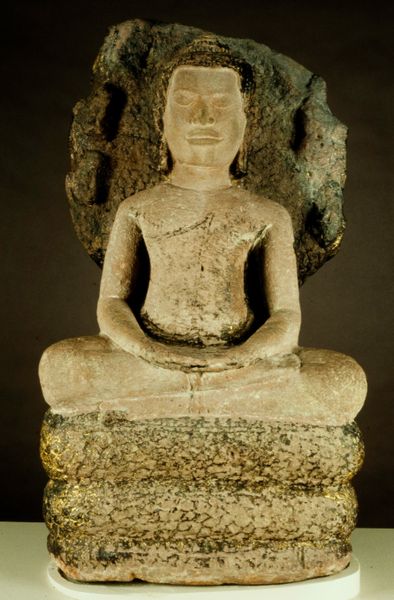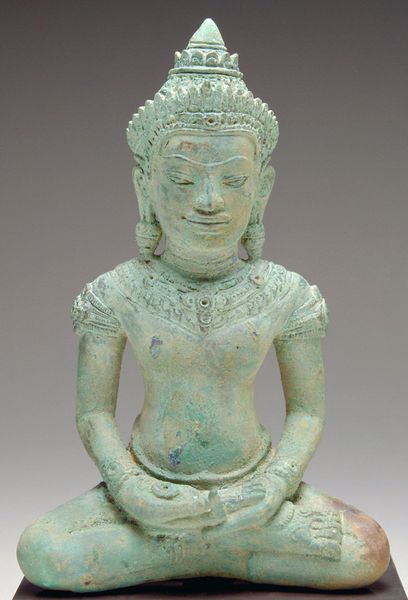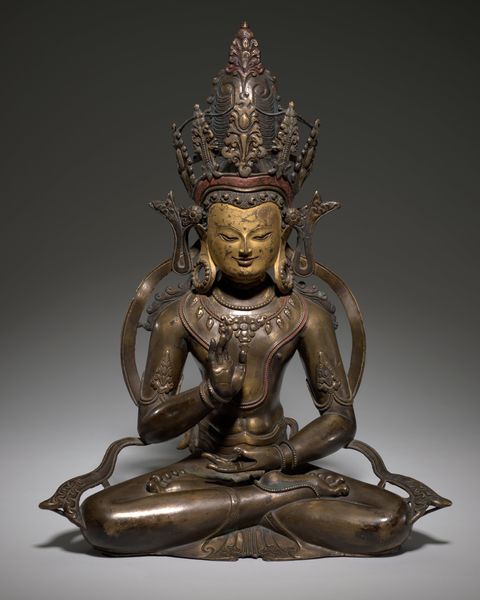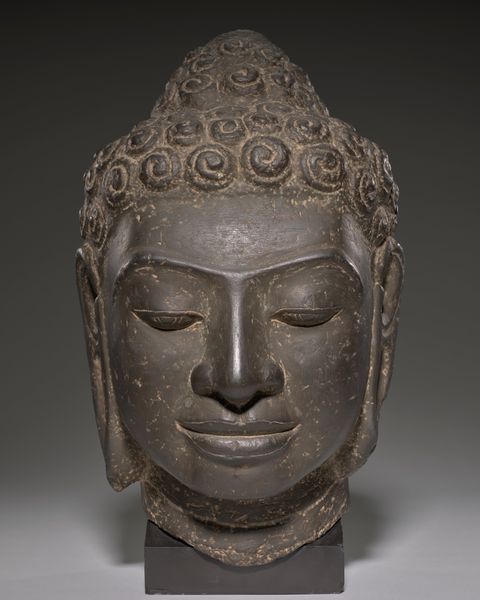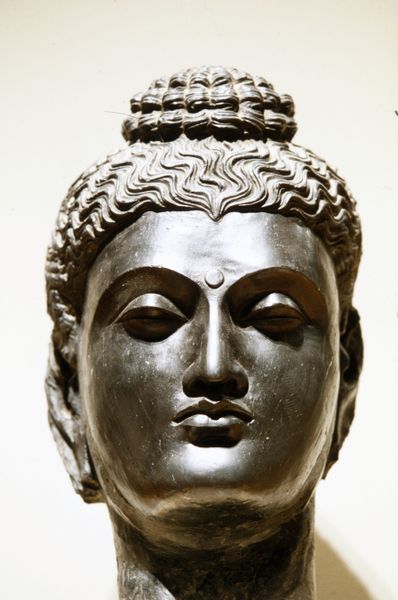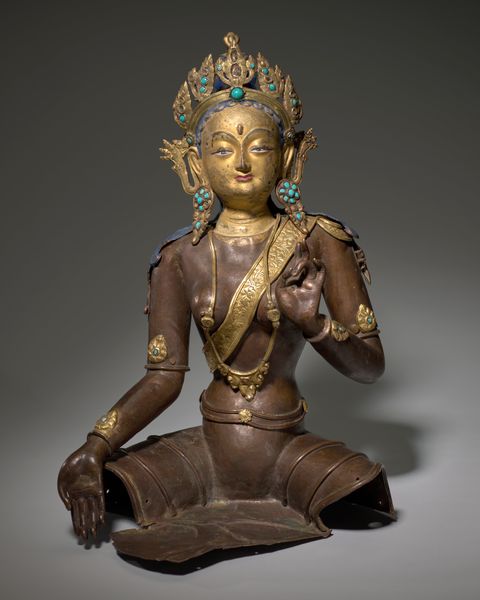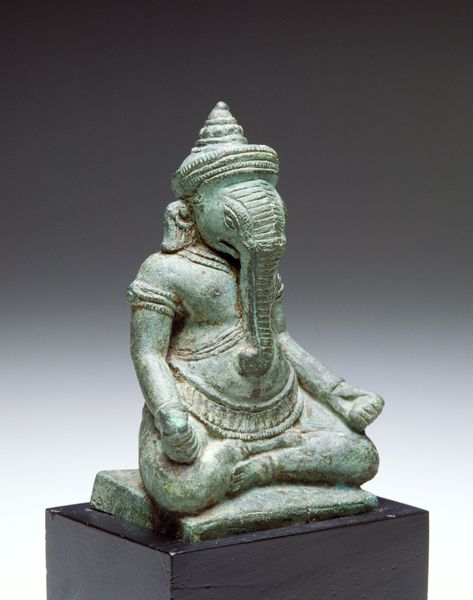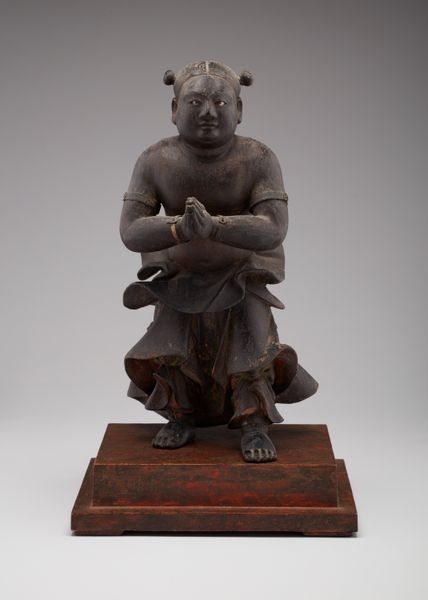
bronze, sculpture
#
stone
#
sculpture
#
asian-art
#
bronze
#
figuration
#
sculpture
Dimensions: 25 x 20 1/2 x 13in. (63.5 x 52.1 x 33cm)
Copyright: Public Domain
Editor: This bronze sculpture, "Seated Jina," dates back to around 1108 and is currently housed in the Minneapolis Institute of Art. I'm immediately struck by the serene expression and the polished surface of the bronze. What aspects of its history and context should we consider when looking at this piece? Curator: The Jina images, particularly this one from around 1108, are powerful testaments to the Jain tradition's visual culture. These sculptures weren’t simply aesthetic objects; they were active participants in the shaping of Jain identity and belief. How do you think the act of creating and displaying this image shaped the religious community and vice-versa? Editor: I imagine the creation of something so intricate and valuable would have required considerable patronage and demonstrated a commitment to the faith. Were these images typically displayed in public spaces? Curator: Exactly! Their placement in temples and public areas made Jain principles accessible and visible, thus solidifying their socio-political presence. But how do you think such an image might function differently for a monastic community versus lay worshippers? The institutional and public display context has clear power dynamics. Editor: For monks, it might be a reminder of their vows of detachment. But for the laypeople, it could function as an aspirational symbol, showing a path they can follow within their own lives. It’s amazing to think of this single image performing different social functions. Curator: Precisely. And it demonstrates how religious images weren't passively consumed, but actively engaged within differing societal roles. The image participates in the negotiation of religious and societal identity. What have you noticed about public art? Editor: Considering it this way shifts my perspective entirely. I will be thinking a lot more about social function when visiting the next exhibit. Thanks! Curator: Likewise, considering these objects as active participants certainly enriches our understanding of art history.
Comments
minneapolisinstituteofart almost 2 years ago
⋮
In Hinduism (Brahmanism), sculpture serves as a vessel for the divine spirit. In Jainism, sculptures like this one are inanimate and, instead, embody a model of behavior as perfected by the Jina. The Jina (perfected being) is a spiritual victor who has gained release from the world by abiding to strict principles of nonviolence and the abandonment of material possessions. Even physical or mental action is considered a form of material attachment. The Jina, of which there have only been 24 (the last being Jina Mahavira, founder of the Jain faith in the 500s bce), has arrived at the indestructible, immortal, and all-knowing inner soul. This ideal is expressed in the figure’s perfect stillness. A Sanskrit inscription on the cushion names the sculpture’s patron—“Jakula, son of Avasara in the pragvata lineage”—and dates its dedication, when it would have likely joined a row of such images at a Jain temple. Because few devotees can fully abandon the responsibilities of everyday life, such acts of philanthropy are believed to push the soul slowly forward along the path to perfection.
Join the conversation
Join millions of artists and users on Artera today and experience the ultimate creative platform.
